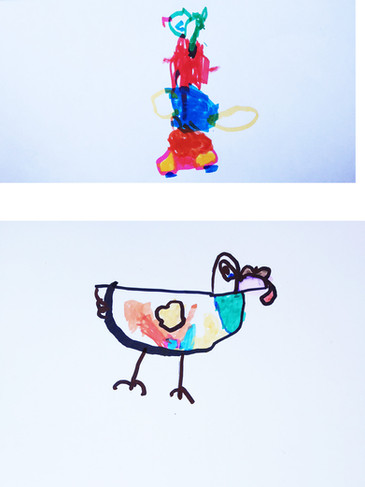Using the Monart method
- Jenny Wood
- Oct 8, 2014
- 3 min read

Today I spent time using the Monart method session with 15, four year old children in a Kindergarten class. I’ve run many art classes with children before, but this was an experiment to see how the Monart Method impacted them. I am calling it a ‘new’ method because it’s new to me, although it’s hardly new because it’s been around since 1979.
What is the Monart Method?
In 1979 Mona Brookes developed the Monart Drawing Method through a grant from Pepperdine University as a new standard for teaching children how to draw realistically. However, the Monart Method does more than simply teach children how to draw. Leading educators recognize Monart as an academic program incorporating several key learning modalities such as focus & concentration, decision making, problem solving, sequence planning, and development of hand-eye coordination & fine-motor skill.
A Monart class provides a non-competitive environment that promotes success and self-esteem. Much like learning the alphabet to read or notes & scales to play an instrument, Monart teaches children to see the world around them in five basic elements of shape and helps them develop the skills needed to translate that information to paper. Since 1979, Monart has been taught in classrooms around the world. The Monart Method has achieved great results with children of all skill levels, including those with learning difficulties. The use of Monart in classrooms has also resulted in increased reading & math levels and better concentration & problem-solving.
I was feeling quite sceptical about the process because I felt it didn’t nurture creativity. After today, however, I am both excited and amazed at the results. The children were captivated and focussed for the entire 1 hour session. At one point I asked them to look into the eyes of the child next to them and tell me what shapes they could see. They were animated and shocked to see that there was a ‘dot’ and a ‘circle’ in there!

After reading the children a book (which I illustrated) about a bird losing it’s nest, we proceeded to do a warm up exercise which explained the ‘drawing alphabet’ and all of the shapes in it. The warm up exercise was quite complex but most children managed to complete it with incredible accuracy. They were told to ‘do their best’ but that it didn’t matter if it wasn’t perfect or if they found it difficult.
Prior to me arriving, the Kinder teacher asked them all to draw a bird. This became our benchmark and gave us the ability to compare their drawings.
After doing their warm up exercise and talking about shapes, we drew another bird by breaking it down into shapes. Then I showed them a method of using watery ink to add colour. The comparison of the two art pieces is quite stunning. The 2nd drawings are purposeful and yet they are all different with individual personality and character. You can see the comparison in the drawings at the bottom of this post.
Using ink to colour afterwards
Special attention to colouring it in!
At the end we ‘appraised’ each piece of work. I asked them what they liked about every drawing as I held it up for them to view. They mostly said ‘I like the beak’, ‘I like the stomach’. I asked them ‘What do you like about the beak?’. They began to appraise the work and use more descriptive words. They described artwork as ‘spikey’, colourful, angry, happy etc.
These children are typical four year olds and weren’t chosen according to ability. I had no idea what their ability was when I met them which is why I asked them to draw a bird before I arrived. They were keen, attentive and very engaged. Several of the children have a disability which impacts their view of the world. This was their first drawing class in an ‘official’ way.
Have a look at their ‘before and after’ drawings which were all created on the same day. They seemed very happy with their experience and satisfied with the result.
The images of each child’s drawing below have the ‘before’ at the top and the ‘after’ at the bottom. Aren’t they beautiful?
Keep an eye out for children’s drawing workshops







































Comments